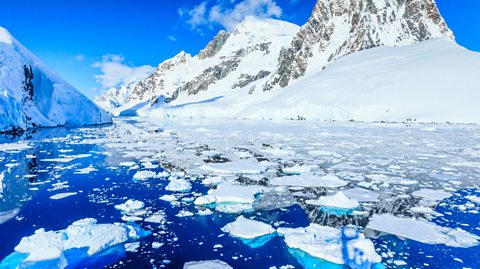Australia: the continent where you’re guaranteed to hear the phrase ‘g’day!’ wherever you go and home to a hopping animal, around twice as common as humans.
Commonly called ‘the land down under’, Australia is at the heart of the fourth episode of Seven Worlds, One Planet. It is the fastest moving continent on Earth, shifting so fast that its coordinates need to be realigned every so often.
We take a look at some of the unique wildlife and natural wonders of the smallest continent on Earth.
The kangaroo that can jump over a car
You may have guessed it, but the hopping animal we mentioned at the beginning is the kangaroo. Kangaroos are so numerous that their estimated total population is double that of humans.
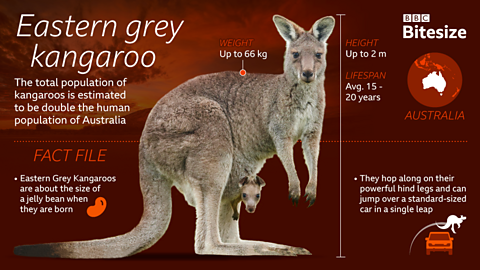
However, kangaroos don’t have the easiest of starts to life. About the size of a jellybean, blind and hairless, eastern grey kangaroos climb up through their mothers fur to her pouch where they attach themselves to a teat. This journey is very difficult for young joeys (the name of baby kangaroos and other marsupial young) and it ensures only the strongest will survive. They grow quickly in their mother’s pouch before emerging after six months.
Eastern grey kangaroos don’t run - they hop along on their powerful hind legs. In one single leap they can jump over a standard-sized car and have top speeds similar to that of racehorses. The downside… they can’t go backwards. Well, you can’t win them all.
The ancient natural wonders
As one of the oldest continents on Earth, Australia has some of the oldest geological features.
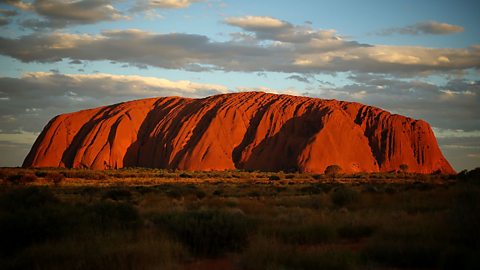
The Uluru rock in the Northern Territory state of central Australia is one of the continent’s natural wonders, sacred to Aboriginal Australians. It is a large single sandstone rock called a monolith, and at a height taller than the Eiffel Tower, it is the largest monolith in the world. The rock is famous for its rock art carvings by the ancient people of Anangu, a group of Aboriginal Australians who own the rock, but lease it to the Australian government.
It’s difficult to say exactly how far back the carvings date but the Anangu people have lived in the area for more than 30,000 years. The rock art is an important historical and scientific record of human occupation in this area. Uluru is sacred to the Anangu people. In October 2019, a ban was introduced on climbing the sacred rock because of the spiritual significance of the site, as well as for safety and environmental reasons.
Australia’s wild dog
You may look at dingoes and think they look like regular pooches, but don’t be mistaken: the dingo is considered Australia’s wild dog. They originate from a south Asian variety of the Grey Wolf and are thought to have been introduced to Australia from Asian seafarers around 4,000 years ago.
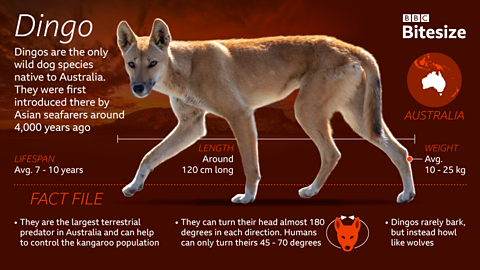
Although they are important in helping control the populations of kangaroos, rabbits and small rodents, they are known to hunt domestic animals and farm livestock when native species are scarce. Dingoes either hunt alone or in groups of two to 12 individuals and can travel up to 20 km (12 mi) in one day.
Ningaloo reef
Most of us have heard of the famous Great Barrier Reef on the east of Australia, but the Ningaloo Reef on the western side is also key for its role in protecting important marine wildlife species. More than 500 tropical fish inhabit the 300 km (186 mi) long reef, and live in and around more than 200 species of coral.
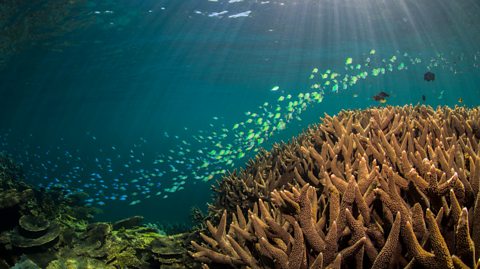
The reef lies close to Australia’s shore - this is called a fringing reef. It’s the largest of its kind in the world. It’s so close to the shore that in many places, you can simply walk from the beach into the water to admire its beauty. In 2011, the Ningaloo reef was recognised as one of the most biologically diverse marine environments on the planet with a Unesco world heritage listing.
Who’s this little devil?
When some of us hear the ‘Tasmanian devil’, we may think about the cartoon character who destroys everything in its path. In real life, Tasmanian devils are different but they do share some similarities with their cartoon counterpart.
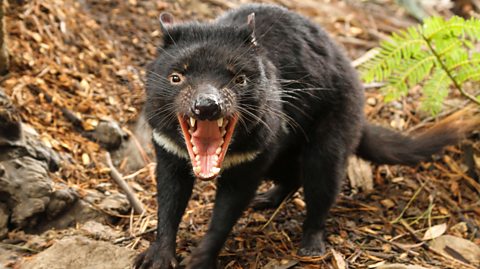
The Tasmanian devil got its name from European settlers, who upon hearing unearthly screams from the dog-like animal with big sharp teeth, decided to call it ‘the devil’. The ‘devil’ is found on the island of Tasmania, off the coast of southeast Australia, and it became extinct on mainland Australia some 3,000 years ago. The devils are known to fly into a rage when threatened by a predator, defending a meal or competing for a mate.
Like the Eastern grey kangaroo, the Tasmanian devil doesn’t have an easy start to life and has to compete to survive. Mothers give birth to between 20-40 joeys at once, but they have to race to her pouch where only four teats are available.
South America: Rainforests, rivers and waterfalls
From unique natural wonders to an abundance of wildlife. Find out more about the most species-rich continent on the planet, South America.
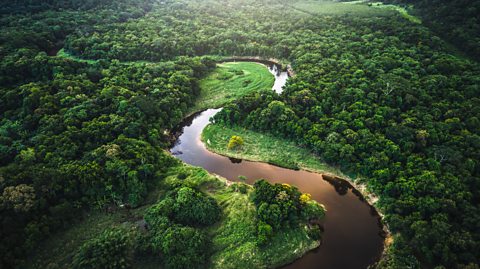
Asia: The largest continent on Earth
Seven Worlds, One Planet is back and episode two is about the largest and most populous continent on Earth, Asia.

Antarctica: Five facts about the icy continent
We take a look at Antarctica's ecosystem and some of its native animals, like the biggest mammal in the world.
